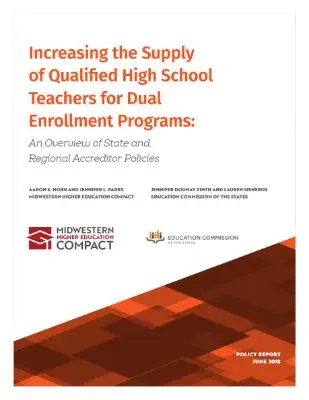Increasing the Supply of Qualified Teachers for Dual Enrollment Programs
As dual enrollment programs continue to expand, a critical challenge is to ensure that the quality of such courses offered by high school instructors is equivalent to the quality of courses taught by college faculty. Standards for faculty qualifications have historically constituted one facet of efforts to regulate educational quality and have recently come under increasing scrutiny by state policymakers and some accrediting bodies. For example, the Higher Learning Commission (HLC), the largest of the regional accreditors, refined its policy language in 2015 pertaining to the qualifications of faculty and, consequently, the qualifications of dual enrollment instructors. HLC underscored its requirement that dual enrollment instructors possess a master’s degree in the content area being taught or a master’s degree in another field with at least 18 graduate credit hours in the relevant content area. States, institutions, and school districts suddenly found themselves with a significant proportion of their dual enrollment teaching force that was under-credentialed.
This report seeks to inform state policy for increasing the supply of high school instructors who are qualified to teach in dual enrollment programs. First, a brief definition of dual enrollment is provided. Second, results are presented from a content analysis of state policies for dual enrollment instructor qualifications. Third, the faculty qualification policies of regional accreditation organizations are compared with a particular emphasis on the Higher Learning Commission and the Southern Association of Colleges and Schools. Fourth, several strategies are identified that aim to bolster graduate education programs and encourage teachers to complete relevant graduate coursework.

